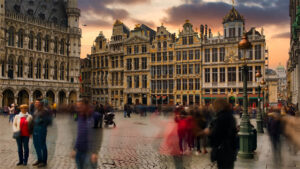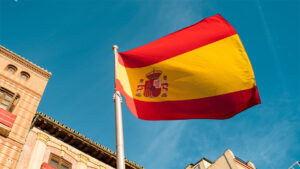Jump to other parts of this series: Intro, France, Germany, UK, Japan, and Canada.
In any discussion of foreign affairs the same list of powerful countries have been bubbling up for decades, if not centuries. The order often shifts, but the countries themselves tend to hold on: the United States, Russia (aka the USSR), Japan, the United Kingdom (aka the British Empire), France, Germany (aka Prussia). There’s also a secondary list of largely regional powers: Iran, Turkey, India, Mexico, Brazil, Argentina and Sweden. Israel, Korea and Pakistan are relative newcomers to the second list while China has graduated from the latter list to the former.
One country that most don’t spare thoughts for, however, has been one of the world’s top ten economies ever since humanity developed sufficient command of statistics to come up with the list in the first place. That country is Italy, and it is about to crash back into the world as a significant player.
But first, it has to…crash. Hard.
Contemporary Italy is beyond dysfunctional.
- The country is flat out broke — only Japan and Greece have national debts that are higher in relative terms.
- Its banking sector is arguably the most overextended in the world, with a relative weight of bad loans that is eighty times that of the United States at the height of the subprime crisis.
- Unemployment is at a level that would spawn riots in the United States.
- The birthrate collapsed thirty years ago and never recovered. Its population is one of the ten most rapidly aging on the planet, and already well past the point of meaningful recovery.
- The country’s current pension overhang is already among the worst in the world, and that before the Italian Baby Boomer generation even begins to retire.
- Italy suffered greatly during the European financial crisis and its economy hasn’t seen appreciable growth since 1998.
- Citizen trust in government is so low as to barely register in opinion polls.
And the political situation is an utter circus, complete with actual clowns or, more accurately, a populist comedian but you get the idea. The Italian equivalent of the Republicans and the Democrats have been gutted to the point of extinction, being displaced by an alliance that could only happen in Italy: a pair of parties that most closely resemble Texan secessionists (the Northern League) and Bernie Sanders…if Bernie Sanders was a career comedian who used a lot of racist jokes and opened rallies with the song “America-F*** Yeah” (the Five Star Movement).
What’s the way forward here? There isn’t one, except national collapse. Italy as a modern political economy is already over. The only reason it has not passed into history already is that it is lashed into the European Union. There are many structural issues embedded within the European system that could bring the entire edifice down. The United States withdrawing from the global order is one. The death of Italy is another. Weighing in at over $2 trillion dollars, the Italian system isn’t too big to fail — it is too big to save.
But from the rot of the current system, from the end of a Europe that is united and free, something new is about to arrive. Or perhaps it is more accurate to say that something old is about to return.
The Italian core territory is unlike anything else in the world. The Po Valley is a rich land with a perfect climate nearly encapsulated by some of the world’s most rugged mountains. The Po’s entire northern horizon are the European Alps. Even with today’s technology and centuries of infrastructure building in what was until very recently the world’s richest continent, the Alps still remain a massive barrier to communication, much less armored columns. To the south the Apennine Mountains of the Apennine Peninsula are certainly less imposing, but the utter lack of large chunks of flat land (and the fact that southern Italy is a peninsula of peninsulas) make it both a non-challenge to the economic and political supremacy of the Po as well as an at best imperfect invasion route.
In the Po’s near neighborhood there are no meaningful threats. To the north — across the Alps — are Switzerland and Austria, a Germanic pair of countries far more concerned with issues on the Northern European Plain than in the Po. To the east are the minor and often failed states of the Western and Southern Balkans: Slovenia, Croatia, Bosnia, Serbia, Montenegro, Macedonia, Kosovo and Greece. None of which — individually or in concert — can hold a candle to Italy’s economic heft, and none of which — individually or in concert — pose even a modicum of a security threat. (If anything, their bickering chaos provides Italians with a massive strategic buffer.) To the south across the Mediterranean is Northern Africa, a region that has not posed a meaningful danger to Southern Europe since Christopher Columbus was a teenager.
That just leaves its western neighbor, France. The Italians may have some differences of opinions with the French, but since the Franco-Italian border is a chunk of the Alps and the Po’s window on the world lies far to France’s east via the Adriatic, it is rare for the pair to butt heads. Add in a moderate sized navy of moderate skill — which the Italians have — and the Po is if anything more secure than the United Kingdom.
And that’s how we must think of the Po — as an island. Separate from Europe, separate even from the rest of Italy. Within that distinction lies the Italians’ future.
In the world before World War II the Po Valley was one of, and at many times the, economic powerhouse of the both Europe and the Greater Mediterranean. Its physical separation and inviolability made it the logical location to broker deals, to install infrastructure central to the economic health of the broader region, and to serve as trade middlemen for everything that mattered.
Part of the attraction of the Americans’ installation of a global security order was that geography mattered less, so countries with often-compromised geographies could shine — in many cases for the first time. For the Po Italians whose geography was their ticket to centrality and wealth, this sort of sucked. Had they not been on the wrong side during the war and not already been issued an opinion on the matter, they may well have sat out membership.
As the Bretton Woods order expanded, as the European Continent unified under the aegis of the European Union, as stability spread, what made the Po special became less so. Italy as a whole saw its position slide. With the end of the Cold War the Po is little more than a rich backwater. Italy as a whole hasn’t seen meaningful economic growth in nearly two decades, and its end is nigh.
But Trump’s actions at the G7 indicate that the system that has so enriched the rest of the world and so stabilized Europe — in part at Italy’s expense — is at its end. Remove global stability, remove the European Union and NATO, break the supply chains that supply the global system with everything from cars to crude, and all of a sudden the Po’s island-but-not-an-island geography combined with its relative centrality makes it the place to be.
So what kind of place will the Po become? What does it have to offer?
First, a step back to frame the discussion:
Just as the Po Valley and “Italy” are not the same thing, the Po Valley itself isn’t one place. The cities of Northern Italy in many cases have identities and histories just as distinct from one another as full-blown European countries. Verona, Trento, Parma, Bologna, Milan, Venice, Turin, and Genoa were all independent players from the fall of the Roman Empire right up until Italian Unification in the 1870s. That means they only rarely act as a unit, and the emphasis of all things Italian has always been on diversification and differentiation.
In the world of energy it means the Italians maintain one of the most varied set of refineries in the world, able to take in any crude stream and process it into any end product. Today Italy boasts roughly double the refining capacity they need. Toss in the sort of economic adjustment that comes from state collapse and dollar to donuts the Italians’ surplus capacity will soon make them the largest source of available refined product within three thousand miles in a world where energy security for most is a long-faded dream.
In the world of manufacturing it means the Italians make things a bit differently. For Italians wares are not about assembly lines or efficiency — that requires economies of scale and integration. The Italian cities compete with one another instead. They don’t share. They keep all the steps in house, so it is all about expression and perfection. The sort of long, gangly, multinational supply chains that can only survive in a world of stability and global market access are not the sort of things Italians do well. Think Fiat. So instead of mass producing serviceable items, the Italians hand-craft products that could easily be mistaken as art. Think Lamborghini and Versace. That sort of “manufacturing” does just fine when the world falls apart.
The problem with this machinery-as-art model is labor. It literally takes a lifetime to train a Ferrari craftsman. It is something the new manufacturing techniques that are sweeping the American industrial space cannot integrate into. The Italians don’t hate immigrants for simply the standard religious, ethnic and economic reasons, but also because immigrants simply cannot help with the problem the Po faces.
Nor is this new. Nor is it constrained to outsiders.
The Po Valley versus Italy’s south is a study of polar opposites; the Po’s sophistication and productivity contrasts sharply with the statist rot, civil breakdown, organized crime, and poverty of the South. Between unification and 1940, southern Italians moved en masse to work in northern factories. This was at a time when Northern Italian sentiments toward many in Southern Italy was racist in a generous sense. Even Mussolini’s son-in-law is said to have privately mused that perhaps it would have been better to be born a Jew than a Sicilian in Fascist Italy (against the backdrop of the Holocaust, no less). Today, the south’s population is smaller, older and sicker relative to the north than ever before. It is already on the ragged edge of failed statedom, and northerners fear southern in-migration nearly as much as they resist boatloads of migrants from Africa.
Northern Italy doesn’t need Southern Italy for anything in the traditional sense: labor, market, capital, technology, food, even strategic depth. What the Po does need is free access to the Mediterranean for oil inflows and trade outflows (and perhaps the refineries that dot the southern coastlines). It needs Southern Italy to be in a box that also contains the Southern Italians and blocks would-be migrants from the world beyond. It needs to be able to treat the south as an occupied territory.
There’s really only one governing system that can fit that bill: Fascist. Again, this isn’t new. Fascism was well established in Italy a decade before Adolf Hitler’s rise to power in Germany for much of the same reasons.
Assuming the Italians of the Po can constrain and contain the Italians of the south, there is little need to venture further out. The Po will again become the lynchpin between the Middle East and Africa on one side, and Europe on the other. The Italians’ very lack of strategic ambition makes them the perfect middleman. About the only weakness in such a system is ensuring sufficient inflows of crude so that Italy can be a large refining center. There’s nothing new here either: The Northern Italian cities have been brokering deals with whoever controls the Eastern Mediterranean for the commodities of the day for over a millennium.
To paraphrase an old European saying: Italy is dead. Long live Italy.









